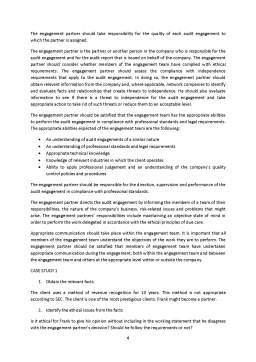Extras din seminar
Seminar 1 – The framework for presentation and preparation of financial statements
An acceptable coherent framework of accounting principles is essential for preparing financial statements. The major reasons for a framework for the preparation and presentation of financial statements are:
- To identify the concepts underlying the preparation and presentation of financial statements
- To assist users to understand the international financial reporting standards
- To provide principles as not all issues are covered by the international financial reporting standards.
The scope of the framework:
The existing framework deals with the following:
- The objective of financial statements
- The elements of financial statements
- The recognition of the elements of financial statements
- Measurement of the elements of financial statements
The objective of financial statements is to provide information about:
- The financial position – Balance Sheet
- The performance – Income Sheet
- Changes is the financial position – cash flow statement
This information should be useful to a wide range of users for the purpose of making economic decisions. Fair presentation is achieved through the provision of useful information in the financial statements whereby transparency is secured.
If one assumes that fair presentation is same to transparency, a secondary objective of financial statements can be defined as follows:
- To secure transparency through full disclosure and provide a fair presentation of useful information for decision-making purposes.
The following are basic elements that make the information provided in financial statements useful to users:
- Relevance. Relevant information influences the economic decisions of users, helping them to evaluate past, present and future events or to confirm or correct their past evaluations.
- Reliability. Reliable information is free from material error and it can be depended upon by users, the following contributing to reliability: faithful representation, substance over form, prudence, completeness.
- Comparability. Information should be presented in a consistent manner over time and in a consistent manner between entities.
Understandability. Information should be understandable by users who have a basic knowledge of business, economic activities and accounting and who have a willingness to study the information.
The following are underlying assumptions of financial statements:
- Accrual basis, which means the effects of transactions and other events are recognized when they occur, not when the cash flows. So, the effects are recorded and reported in the financial statements of the period to which they relate.
- Going concern, it is assumed that the company will continue to do business for the foreseeable future.
The following are constraints of providing relevant and reliable information:
- Timeliness, which means that in due delay in reporting could result in loss of relevance but improved reliability.
- Benefit vs costs which means that benefits derived from information should exceed the costs of providing it.
The elements of financial statements
The following are elements that relate to the measurement of financial position:
- Assets - resources controlled by the company as a result of past events and for which future economic benefits are expected to flow to the company.
- Liabilities – present obligations of a company arising from past events, the settlement of which is expected to result in an outflow from the company of economic benefits.
- Equity – shareholders funds – assets – liabilities.
The following elements are directly related to the measurement of performance:
- Income – increases in economic benefits in the form of inflows of assets or decreases of liabilities that result in a increase of shareholders’ funds.
- Expenses – decreases in economic benefits in the form of outflows of assets or increases of liabilities that result in decreases of shareholders’ funds.
The initial recognition of elements
A financial statement element should be recognized in the financial statements if it is probable that any future economic benefit associated with the item will follow to or from the company and the item has a cost or value that can be measured with reliability. Subsequent measurements of elements are based on the historical cost, the current cost, the settlement value or the present value (also known as fair market value).
Preview document
Conținut arhivă zip
- Audit.docx























